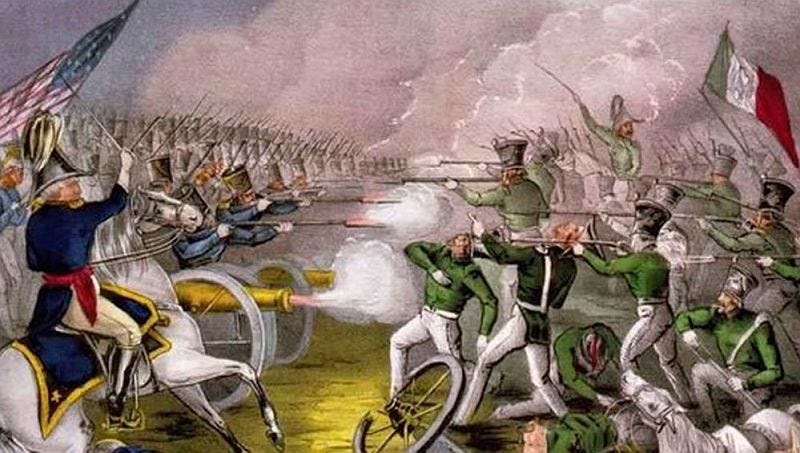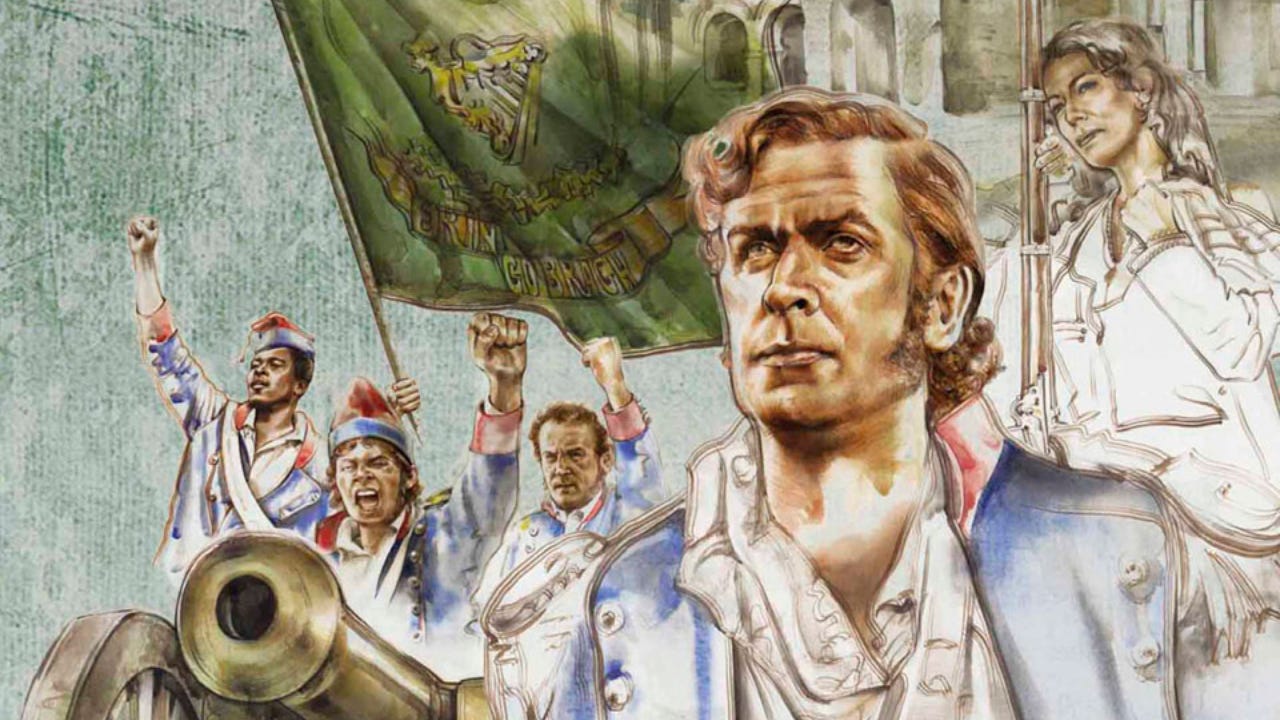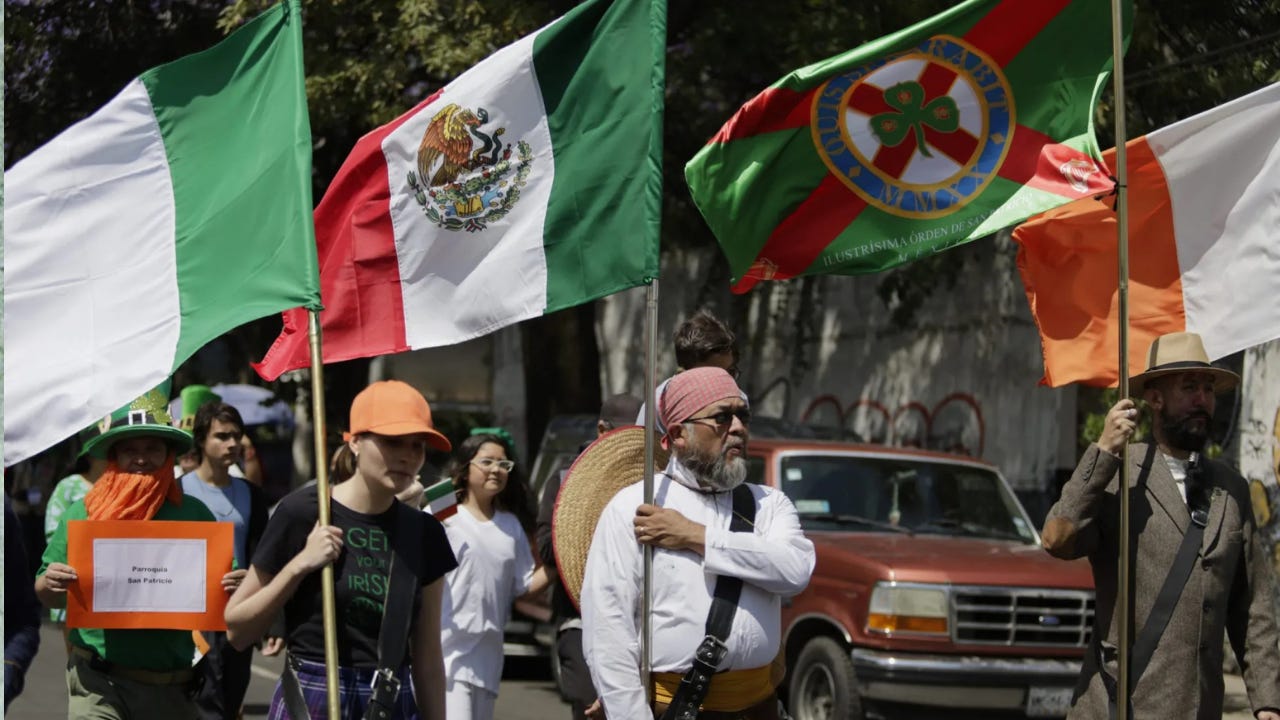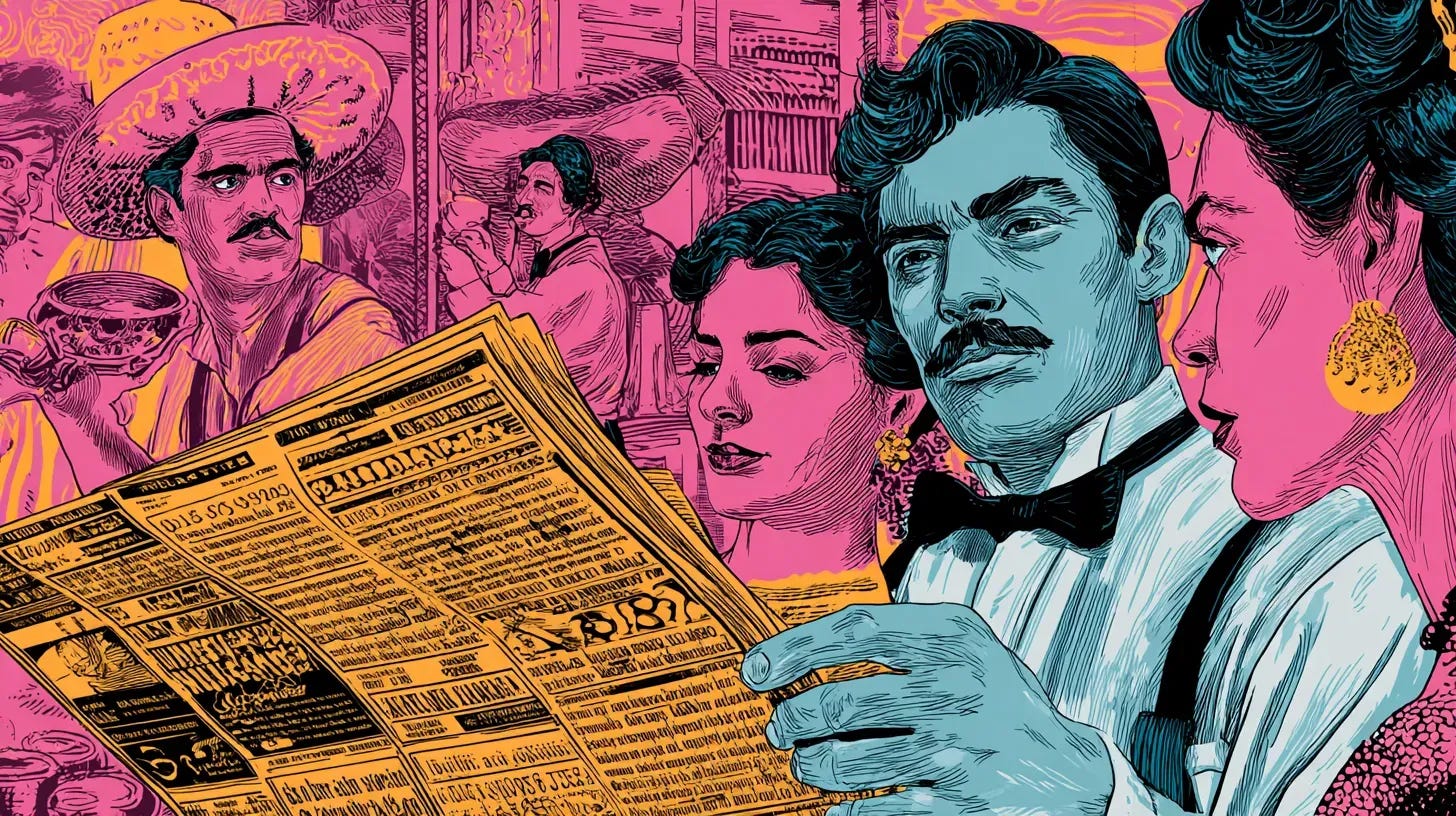Remembering The San Patricio Battalion
In the 1840s, some believed the war against Mexico was a Protestant crusade to eradicate Catholicism.
JOIN TODAY and get 10% off your Daily Chela Insider subscription for an entire year.
The story of the San Patricios has been told many times: roughly two hundred American soldiers, most of them Irish, deserted during the Mexican War (1846–1848) to fight for Mexico. They became the fiercest defenders of their adopted homeland.
At Buena Vista and Contreras, they held their ground for two hours after the Mexican lines had already broken. General Santa Anna kept them close—he knew how deadly they could be.
The climax came on the outskirts of Mexico City, just weeks before the fall of Chapultepec and the celebrated episode of the Niños Héroes. The Mexicans and their Irish allies faced the Americans at Churubusco. Most of the San Patricios were killed; about seventy were captured.
They were court-martialed, flogged, branded on both cheeks with a “D” for deserter, and roughly seventy were hanged as traitors. For some, the punishment was even crueler: they were led to a high vantage point, forced to watch the storming of Chapultepec, and, once the American flag rose over the fortress, the signal was given to hang them—ensuring the last image they saw was the victorious flag they had forsaken.
A Call of Faith
The desertion of the Irish soldiers is often explained in simple terms: they were Catholics. During the invasion, Mexican churches welcomed American Catholic soldiers, allowing them to attend Mass and receive the sacraments. Many priests urged them to join the Mexican cause.
One of President Santa Anna’s leaflets during the War said:
If you are Catholic, the same as we, why are you seen sword in hand murdering your brethren? Come over to us, you will be received under the laws of truly Christian hospitality which Irish guests are entitled to expect and obtain from a Catholic nation.
For many Irish deserters, faith was indeed a powerful reason. They saw American troops desecrate churches; they felt the sting of anti-Catholic prejudice within their own ranks. In the 1840s, some even believed the war against Mexico was a Protestant crusade to eradicate Catholicism.
A More Complex Reality
Yet to reduce their defection to piety is simplistic. The Irish were poor, persecuted, and often mistreated—sometimes even pressed into service. Prejudice against them in the United States was vicious. Signs reading, “No Irish Need Apply,” were common in the States. Anti-Catholic riots in Boston, Philadelphia, and St. Louis turned particularly violent against Irish immigrants.
In the army, they were called “micks” and “potato heads.”
In that context, joining Mexico may have been not just an act of faith, but a rejection of a system that despised them. Catholicism served as a cultural bridge, but also as a political language: faith as a flag of dignity.
The Political Myth and Its Evolution
Of course, the Batallón de San Patricio is remembered differently in the United States and Mexico.
Early American histories of the war didn’t even mention them. After all, the Mexican-American War produced the highest desertion rate of any U.S. foreign conflict—more than double that of Vietnam. When they did appear in the record, the San Patricios were little more than a footnote. For many American historians, they remained an enigma: why would anyone leave the U.S. army?
Today, certain progressive circles regard them as America’s first “anti-imperialists.” But that interpretation is recent—a product of later reflection, not of their own time.
In Mexico, too, recognition came late. After the war, many San Patricios were seen begging in the streets. Some were criticized for “excessive drinking.” All of them were ghosts of a cause that neither country wanted to claim.
It wasn’t until the mid-twentieth century that Mexico elevated them to the status of international martyrs. In 1959, more than a century after the war, a marble plaque was unveiled in Mexico City. President Adolfo López Mateos honored them in 1964. Streets were named after them; parades were held to the sound of Irish bagpipes; schoolchildren laid flowers at their memorial. Mexico had carved their names into stone.
The Uncomfortable Truth
So, were the soldiers of San Patricio heroes or traitors? For Mexico, the answer is clear: they fought for the just cause—like the Spaniard Javier Mina, who joined Mexico’s war for independence; or Byron dying for Greece; or Lafayette crossing the Atlantic to fight for American liberty.
But the truth is more tangled. During the Mexican War, there were also Mexican deserters who joined the US army. One of the most notorious was the Compañía de Manuel Domínguez, which—ironically—fought with remarkable ferocity against the San Patricios at Churubusco. Domínguez later claimed he had lost faith in his own country after being robbed by Mexican soldiers during peacetime.
The unsettling thing about both the San Patricios and the Domínguez is that they force us to acknowledge that patriotism is not absolute. Loyalty can fracture when it becomes incompatible with personal dignity.
The San Patricios can be read as an early expression of that realization—that sometimes your allegiance does not lie with the country that uses and discards you, but with the people who share your faith and your wounds.
A Cultural Legacy
More than 175 years later, the San Patricios live on—in history, memory, and art. Novels and histories continue to retell their story; Irish bagpipes sound at Mexico’s Museo Nacional de las Intervenciones; and in 2010, the Irish folk band The Chieftains recorded a full album about them, featuring collaborations with Los Tigres del Norte, Lila Downs, and Linda Ronstadt.
In the end, the question is not whether the San Patricios were brilliant military strategists—President Santa Anna once said that with a hundred more like them, he would have won Churubusco—but why their memory endures so powerfully.
In that sense, they no longer belong to Mexico, the United States, or even Ireland. They belong to the global imagination of all who ask what it means to be loyal—and to whom. Their tragedy, even filtered through myth and idealization, carries something unmistakably universal and human.
JOIN TODAY & Get 10% Off A Daily Chela Insider Subscription For A Year!
Subscribers Get Exclusive News, Videos & Stories:
Our mission is to provide a platform for Mexican Americans, and cover news with the depth and context it deserves.
Here’s how you can help:
Make a Small Monthly Contribution: Your financial support will help us cover operational costs, pay our dedicated team, and expand our reach to more readers.
How To Support:
To subscribe, click on the button below. Thank you for your support and for believing in the power of independent media. Together, we can make sure that every voice is heard and every story is told.








